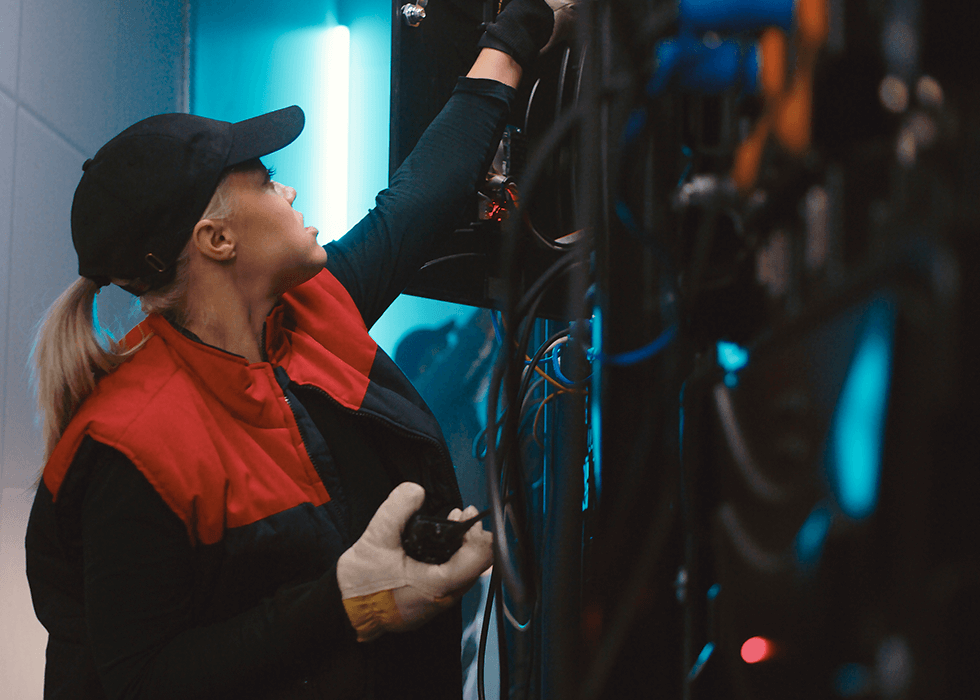News & Trends
6 Emerging AV Trends
To stay competitive in the ever-evolving audiovisual sector, it’s crucial to have a solid understanding of core principles and the newest technological trends.
Our intensive course, At The Cutting Edge: Emerging Technology in Commercial AV, happening on December 10-12, is designed to help you master the intricacies of modern AV technology. Led by Joseph Cornwall, CTS-D, CTS-I, ISF-C, FOI, along with Jose Mozota, CTS-I, President of Freman Solutions Incorporated, this class will help you gain practical insights into signal quality, network infrastructure, source connectivity, and AI in AV.
Let’s begin by exploring some of the latest trends and tools driving the AV industry forward!
Signal Quality
Signal quality has significantly improved in recent years. Advancements in both hardware and software have contributed to better signal transmission, clarity, and overall fidelity. With the widespread adoption of 4K and 8K resolution, AV systems now support higher signal fidelity, with more pixels and greater detail.
“A little over a decade ago the entirety of the AV industry reluctantly adopted HDMI, HDBaseT, and benchmarked performance to 1080p. Today we enjoy high dynamic range HDR10+ content streaming at UHD resolutions and boasting advanced audio options such as ATMOS and DTS-X,” Cornwall explained.
Displays
As consumer displays have evolved, the range of colors achievable in these displays has evolved with it. The Rec720 color space of FHD has become Rec 2020 of the 4K universe. But with continued advancements in displays, installation challenges have also risen.
“The AV industry is facing the challenge of creating and installing the next generation of solutions, and those solutions need to mirror the performance and intuitive ease-of-use we enjoy in our advanced consumer solutions. This isn't going to be an easy lift. AV professionals need to look past the fences surrounding our industry and learn about the emerging technologies we'll leverage to accommodate future industry needs,” said Cornwall.
AVoIP
With the rise of multicast and point-to-multipoint AV distribution over increasing distances being key catalysts, AV over IP is swiftly becoming essential in today’s world. Important developments in AVoIP include standards like IPMX and IEEE 802.3bp.
“The most important development in AVoIP is IPMX, developed by the Joint Task Force for Networked Media and marketed by AIMS, an open transport standard that combines SMPTE 2110 essence streams, with discovery, registration, and monitoring of devices using NMOS and with AES67,” said Mozota.
Along with these advancements in AVoIP, it’s essential to keep security in mind.
“In the field of Cybersecurity, we should be aware of Zero Trust Security and the available tools for its implementation,” Mozota concluded.
Artificial Intelligence
Although AI is currently trending, the origins of AI date back to the 1950s, with the idea of creating machines to simulate human intelligence going back even further in history. Researchers also began to explore the possibilities of machine learning around that time. But it was rudimentary in comparison to today’s standards.
“To put this in perspective, AI is older than the VCR! By understanding where AI started and how it's been used for decades, we can begin to appreciate where it is headed today. Perhaps more importantly, we can begin to understand the strengths and weaknesses of artificial intelligence, how and where it should be deployed, and when we can place our trust in it,” said Cornwall.
Nowadays, AI algorithms are automating tasks like video editing, color correction, and sound mixing. AI is also being used to enhance audio quality, reduce noise, and improve clarity in real time, making it a helpful tool for live broadcasts and remote communications. Staying aware of AI’s advancements is significant in today’s professional workplace environment.
Recommended: The Role of Artificial Intelligence (AI) in Transforming AV Experiences
Sustainability Practices
With a growing focus on sustainability in AV, manufacturers have been developing energy-efficient AV solutions. LED, OLED, and MicroLED display technologies are becoming more prevalent, offering lower power consumption and longer lifespans.
Additionally, AV equipment manufacturers are adopting greener materials, designing products for easier recycling, and reducing carbon footprints during production. But the first vital step to designing sustainably is to learn more about practices and standards. For more information, check out this article on designing sustainable AV systems!
Cloud-based AV Solutions
With the rise of remote and hybrid work models, cloud-based AV solutions like Zoom, Microsoft Teams, and Google Meet are continually evolving. Innovations include better integration of AI, automated transcription, real-time translation, and 4K video conferencing.
There have also been developments in cloud-based digital signage, which you can find more information about on AVIXA's Xchange.
In Closing
From advances in signal quality to cloud-based solutions, the AV industry is continuously evolving. Staying competitive requires being aware of new innovations and standards.














